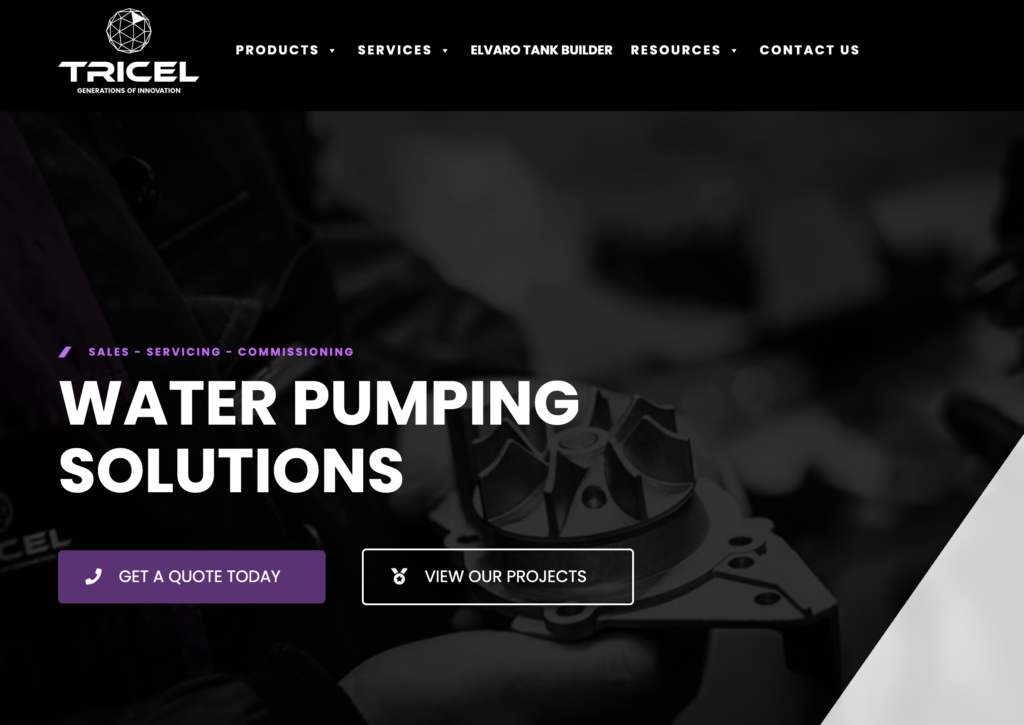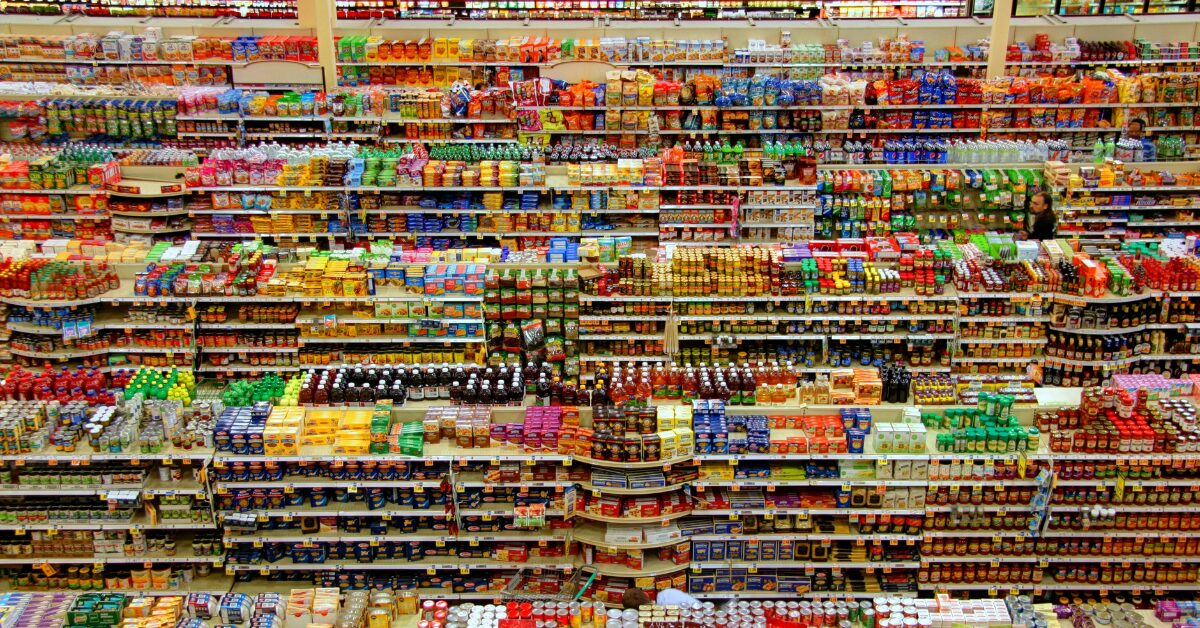
The Role of Water Tanks in HACCP Compliance for Food Manufacturers
Home » Water Regulation » The Role of Water Tanks in HACCP Compliance for Food Manufacturers

In the food manufacturing industry, hygiene and safety are paramount. One of the most critical components of a food safety management system is HACCP (Hazard Analysis and Critical Control Points). While much attention is given to food handling and processing, water storage—specifically the use of water tanks—plays a crucial role in maintaining compliance. This article explores how water tanks contribute to HACCP compliance and why choosing the right tank, like those from Tricel Water, is essential.
What is HACCP and Why Does It Matter?
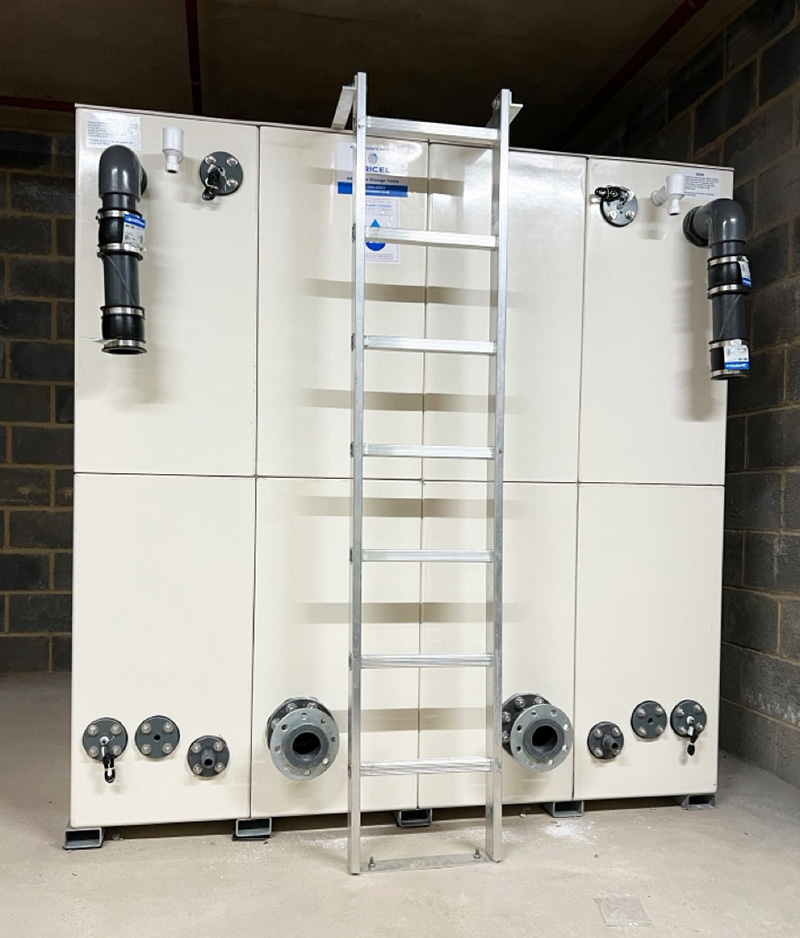
HACCP is a systematic approach to identifying, evaluating, and controlling food safety hazards. It is a legal requirement under Regulation (EC) No 852/2004 for all food business operators in the UK and EU.
The 7 Principles of HACCP
- Conduct a hazard analysis
- Identify critical control points (CCPs)
- Establish critical limits
- Monitor CCPs
- Establish corrective actions
- Verify procedures
- Keep records and documentation
Water used in food production must be potable and free from contaminants, making water storage a potential CCP.
Why Water Tanks Matter in HACCP Compliance
1. Water Quality Assurance
Water tanks must ensure that stored water remains clean, potable, and uncontaminated. Poorly maintained tanks can harbor bacteria like Legionella, E. coli, or Listeria, posing serious health risks.
Water used in food production must be of potable quality, free from harmful microorganisms and chemical contaminants. Water tanks that are not properly maintained can become breeding grounds for bacteria such as:
- Legionella pneumophila – thrives in stagnant, warm water and can cause Legionnaires’ disease.
- Escherichia coli (E. coli) – indicates fecal contamination and can lead to severe foodborne illness.
- Listeria monocytogenes – can survive in cold, moist environments and is particularly dangerous in ready-to-eat foods.
To mitigate these risks, tanks must be:
- Sealed and covered to prevent ingress of dirt, insects, and animals.
- Equipped with filtration systems to remove particulates.
- Regularly tested for microbial contamination and chemical residues.
Tricel’s water tanks are designed with hygiene in mind, featuring smooth internal surfaces that reduce biofilm buildup and make cleaning more effective.
2. Material Safety
Tanks must be made from food-grade materials that do not leach chemicals or degrade over time. Tricel’s tanks are manufactured using WRAS-approved materials, ensuring compliance with UK water regulations.
The materials used in water tanks must be non-toxic, non-reactive, and certified for potable water use. Over time, substandard materials can degrade, leach harmful substances, or react with disinfectants like chlorine, compromising water safety.
Tricel tanks are manufactured using:
- WRAS-approved GRP (Glass Reinforced Plastic) – a durable, corrosion-resistant material that meets UK water regulations.
- Food-grade resins and coatings – ensuring no chemical migration into stored water.
- UV-stabilised exteriors – preventing degradation from sunlight exposure, especially in outdoor installations.
Using certified materials not only ensures compliance with HACCP but also aligns with BS EN 13280 and Water Supply (Water Fittings) Regulations 1999 in the UK.
3. Temperature Control
Maintaining water at safe temperatures is essential to prevent microbial growth. Insulated tanks or those installed in temperature-controlled environments help meet this requirement.
Temperature plays a critical role in microbial growth. According to HACCP guidelines, water should be stored at temperatures that inhibit bacterial proliferation:
- Cold water should be kept below 20°C.
- Hot water used for cleaning or sterilisation should be stored above 60°C.
Improper temperature control can lead to:
- Thermal stratification, where warmer water layers support bacterial growth.
- Condensation, which can introduce contaminants into the tank.
Tricel offers insulated water tanks that help maintain consistent internal temperatures, even in fluctuating ambient conditions. These tanks are ideal for:
- Outdoor installations
- Cold storage facilities
- High-humidity environments
Additionally, temperature monitoring systems can be integrated to ensure real-time compliance with HACCP temperature thresholds.
4. Easy Cleaning and Maintenance
HACCP requires regular cleaning and inspection. Tanks should be designed for easy access, drainage, and sanitisation.
HACCP requires that all equipment, including water tanks, be cleanable, inspectable, and maintainable. Tanks that are difficult to access or clean can become hidden sources of contamination.
Key features that support easy maintenance include:
- Large access hatches for internal inspection and manual cleaning.
- Sloped bases and drainage outlets to ensure complete emptying and prevent stagnant water.
- Modular designs that allow for disassembly and thorough sanitisation.
Tricel tanks are engineered with these features in mind, making them ideal for facilities that require frequent cleaning cycles or operate under strict hygiene protocols.
Regular maintenance schedules should include:
- Visual inspections for cracks, leaks, or biofilm.
- Disinfection using food-safe cleaning agents.
- Documentation of cleaning and inspection activities, as required by HACCP record-keeping standards.
Benefits of Tricel Water Tanks for Food Manufacturers
WRAS-Approved Materials
Custom Sizes & Configurations
UV-Resistant & Corrosion-Proof
Insulated Options for Temperature Control
Easy to Clean & Maintain
Compliant with UK & EU Food Safety Standards
How Tricel Water Tanks Support HACCP Compliance
Tricel Water UK offers a range of customisable water tanks designed specifically for industries where hygiene is non-negotiable. For food manufacturers, this means tanks that are:
- Built to last with corrosion-resistant materials
- Designed for hygiene with smooth internal surfaces
- Compliant with WRAS
- Available in insulated models to maintain safe water temperatures
Whether you’re storing water for ingredient mixing, cleaning, or cooling, Tricel ensures your water storage is never a weak link in your HACCP plan.
FAQs
Yes. All Tricel tanks are made from WRAS-approved materials, making them safe for storing drinking water.
Cleaning frequency depends on usage, but quarterly inspections and annual deep cleans are recommended. Learn more about cold water storage tank installation and maintenance >>
Absolutely. Tricel offers UV-resistant and insulated tanks suitable for outdoor installations.
There’s no one-size-fits-all. Tricel offers custom sizes to meet your specific volume and space requirements.
Water tanks are more than just storage—they are a critical control point in your HACCP plan. Choosing a reliable, hygienic, and compliant tank from Tricel Water UK ensures your food manufacturing process meets the highest safety standards.
Read More...
- Water Tank Installation & Maintenance
- Cold Water Storage Tanks
- Case Studies

Cold Water Storage Tank Compliance in the UK: Regulations, Standards & Best Practices
Ensuring compliance with cold water storage tank regulations in the UK is essential for safeguarding water quality, maintaining system efficiency, and meeting legal obligations. From WRAS approval and LPCB certification to industry standards such as BS EN 13280, strict requirements govern the design, installation, and maintenance of water tanks.
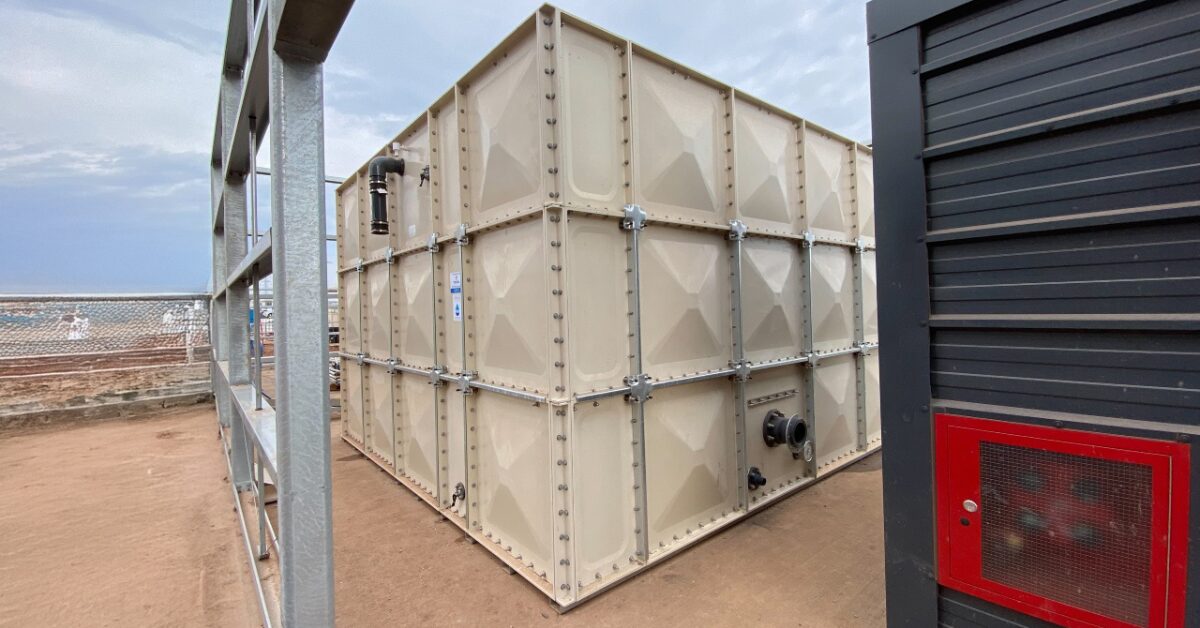
How to Maintain a Compliant Cold Water Storage Tank
Maintaining a cold water storage tank is not just about ensuring a reliable water supplyit is also a legal and safety requirement. A poorly maintained tank can pose serious risks, including bacterial growth such as Legionella, structural deterioration, or non-compliance with current regulations.
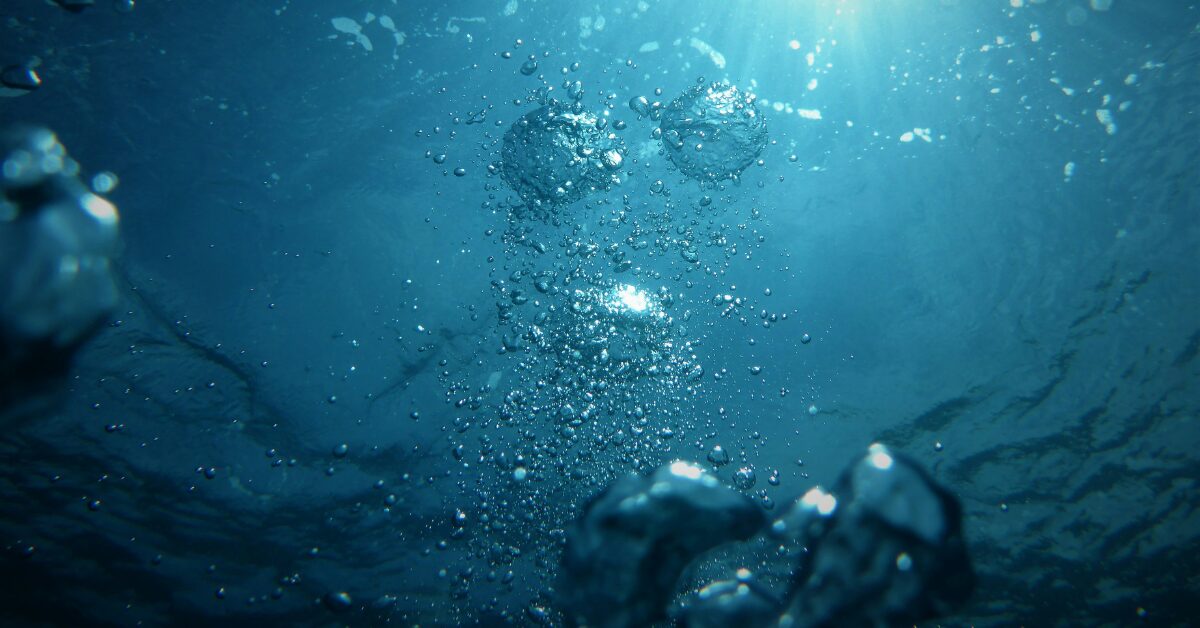
Leak in Water Tank: Causes, Prevention, and Solutions
Water tank leaks can lead to significant structural damage and water loss. Common causes include corrosion, poor installation, and lack of maintenance. To prevent leaks, it's essential to ensure proper installation, use high-quality materials, and conduct regular inspections. For detailed guidance on causes, prevention, and solutions for water tank leaks, refer to Tricel Water UK's comprehensive article.
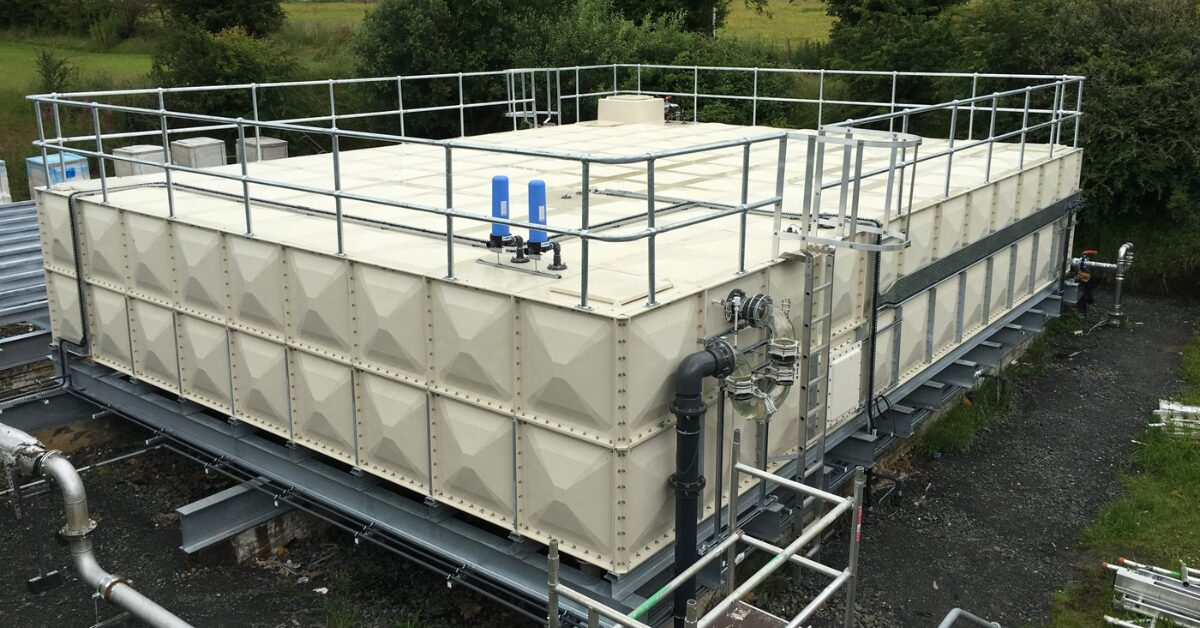
Importance of Base Levelling Steels
Proper base levelling is essential for the stability and longevity of your water tank. This guide explains why base levelling steels are crucial for preventing structural issues and ensuring your tank performs optimally over time.
